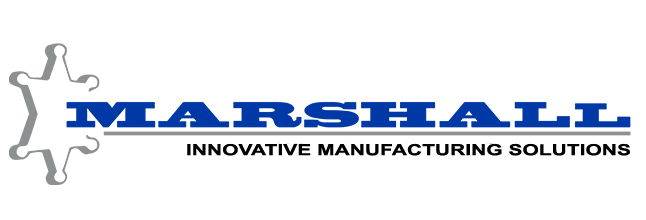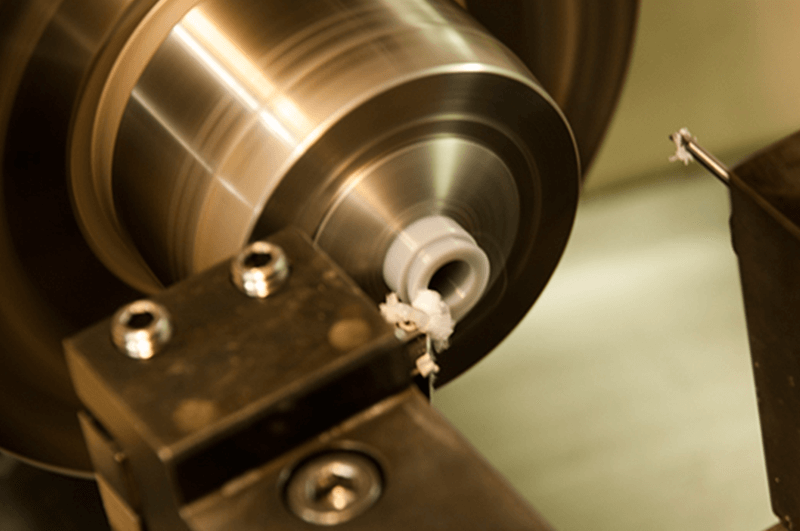CNC machining and 3D printing are highly appealing technologies for medical device manufacturing. Today, even smaller, more complex medical components can be accurately produced via both solutions. But the question remains: which tool is best suited for manufacturing medical devices?
At Marshall Manufacturing Company, we help medical OEMs around the globe find cost-effective solutions for challenging components and assemblies. We offer a range of CNC machining capabilities to ensure our medical customers meet and exceed their production goals. Today, we’ll be examining the key strengths and weaknesses of 3D printing and CNC machining to determine which works best for medical device manufacturing.
What is the Difference Between 3D Printing & CNC Machining?
3D printing is a form of additive manufacturing, while CNC Machining (computer numerical control) is a form of subtractive manufacturing. Put simply, 3D printers build products by fusing layer after layer of material onto each other, while CNC machinery cuts out required components from a larger whole of material.
Strengths & Weaknesses of 3D Printing
3D printing is a rapidly evolving technology that joins layers of materials together to create objects from a 3D digital model. 3D printing is a type of additive manufacturing, which refers to technologies that create 3D objects one layer at a time—with successive layers bonding to the melted material of preceding layers.
This level of precision is made possible through computer-aided-design (CAD) software, tools that break objects up into incredibly thin layers. CAD software produces detailed .stl files that guide a high-precision laser (or electron beam) to melt materials in exact accordance with those layers, which ultimately fuse together to form a 3D object.
Strengths:
One core advantage of 3D printing is that it’s exceptionally flexible, allowing manufacturers to make changes easily without setting up additional equipment. The accuracy of 3D printing also allows manufacturers to create customized devices with complex internal structures. As a result, this technology has become one of the best ways for OEMs to prototype various devices—especially in the medical field, where customization is crucial.
Weaknesses:
3D printing is slow compared to CNC machining, as the various layers of material take time to heat and solidify, making it ill-suited for large-scale production. 3D printed parts also offer inferior mechanical strength (compared to those produced via CNC) because their layers cannot maintain a strong enough bond. Finally, 3D printing offers limited material choice compared to CNC machining, with an emphasis on plastics over metals and specialty materials.
Strengths & Weaknesses of CNC Machining
CNC machining (also known as traditional manufacturing) is a type of subtractive manufacturing that cuts required components from a large mass of material. There are several types of CNC solutions for different components, including Swiss machining, wire EDM and CNC laser welding. Parts produced via CNC machining are extremely strong and feature accurate dimensions, making them ideal for medical devices and many other products.
Using 2D or 3D models in CAD software, engineers can give precise cutting instructions to CNC machines, which use lasers, blades or rotating tools to shape blocks of material. These CNC machines can be customized with a diverse number of axis—using servo motors to ensure accurate movement throughout the cutting operation.
Strengths:
A major advantage of CNC machining is that it can produce complete medical device components without the need for further processing. Proper utilization of CNC machining yields fast cycle times, efficient workflows, flexibility and—most importantly—peerless precision. CNC machining is also compatible with an extensive list of plastics, metals and other specialized materials, making it suitable for producing many forms of medical devices.
Weaknesses:
Traditionally, CNC machining is more labor-intensive than 3D printing. This manufacturing process requires skilled operators to select the appropriate cutting tools, cutting paths and rotation speeds to create an accurate end product. Due to its nature of cutting objects from larger pieces of material, CNC machining also produces more waste than 3D printing and other alternatives.
Will 3D Printers Replace CNC Machining?
Today’s 3D printing solutions are incompatible with hard steels and other materials—and simply cannot provide the efficiency and mechanical strength required for large-scale production. Consequently, 3D printers are unlikely to replace CNC machining for the foreseeable future.
CNC machining remains the most effective technology for medical device manufacturing. And its few limitations can be largely mitigated with the right manufacturing partner. For example, at Marshall, we provide precision machining services for some of the world’s leading medical OEMs, creating innovative designs for optimum manufacturability and customer success.
To learn more about our CNC machining capabilities—and how they can position your production for success—be sure to connect with us today. You can also reach out for more insight on how 3D metal printing and machining solutions hold up against traditional manufacturing.

